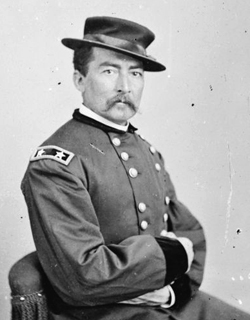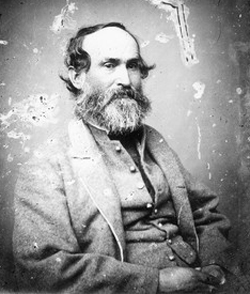3rd Winchester • Tour the Battlefield • Battle Maps • The Armies
The Third Battle of Winchester was fought on September 19, 1864, when Union General Philip Sheridan’s Army of the Shenandoah struck toward Winchester and the flank of Confederate General Jubal Early’s scattered Army of the Valley. But Sheridan’s plan to defeat the Confederates in detail failed when his army bogged down in its approach up the Berryville Road. Early was able to pull together his forces, and the result was the largest and costliest battle fought in the Shenandoah Valley.

Sheridan’s Final Charge at Winchester by Thure de Thulstrup
Tour the Battlefield will take you to the locations around Winchester where portions of the battlefield have been preserved and interpreted, as well as the Confederate and United States cemeteries with monuments and memorials to the men who fought here.
Battle Maps show the positions of the forces through the course of the day’s fighting.
The Armies shows the organization of both armies that fought here, with links for many of the units to unit histories on our companion website, Civil War in the East.
Why is the battle also called the Battle of Opequon?
Like Bull Run/Manassas and Antietam/Sharpsburg, the North and the South called the battle by different names. The North tended to name battles after a nearby river or creek (in this case Opequon Creek, where the battle began) and the South for nearby cities.
Who fought in the Third Battle of Winchester?
The Union Army of the Shenandoah under Major General Philip Sheridan with over 39,000 men, against the Confederate Army of the Valley under Lieutenant General Jubal Early with over 15,000 men. It was the largest battle fought in the Shenandoah Valley during the CIvil War. (see The Armies)
 Major General Philip Sheridan |
 Lieutenant General Jubal A. Early |
Where was the Third Battle of Winchester fought?
The Third Battle of Winchester was fought northeast of the city of Winchester, Virginia.
Why was the Third Battle of Winchester fought?
In June Robert E. Lee had detached Early from the army around Richmond and sent him to the Valley in the hope that he could repeat ‘Stonewall’ Jackson’s 1862 acheivement of diverting many times his strength in Union forces from the fighting around Richmond. Early succeeded, attracting two infantry corps and two cavalry divisions who would have been used against Lee.
Having just taken up his command, Sheridan avoided attacking Early at first due to intelligence that Lee had reinforced Early with one or more infantry divisions and a cavalry division. Early assumed that Sheridan was a cautious commander and responded by spreading his forces out in the lower Shenandoah Valley to disrupt the Baltimore and Ohio railroad and act as a threat to Washington.
But when Sheridan found that Early’s infantry reinfocement was on its way back to Lee – there had only been one division – and that he heavily outnumbered the Confederates, he moved quickly to strike the southern flank of Early’s scattered army at Winchester in the hopes of defeating him in detail and cutting off his forces farther north. None of this worked, but the resulting knock-down battle was still a Union victory.
How many men were casualties?
Sheridan lost 5,000 men, about 12 percent of his army. Early lost fewer men – 3,600 – but it was a quarter of his smaller force. Of Early’s casualties, 1,800 – about half – were missing or captured. In one day there had been more casualties than in the entire 1862 Valley campaign.
Sheridan lost lost one senior officer killed, division commander David Russel. Division commander Isaac Duval and brigade commanders Daniel Johnson, James McMillan, John McIntosh, Jacob Sharpe and Emory Upton were wounded; most would not return to command.
Early lost several senior officers killed or mortally wounded: a division commander, Robert Rodes, and two brigade commanders, Archibad Godwin and George S. Patton (grandfather of the legendary World War II general). His cavalry commander Fitzhugh Lee (Robert E. Lee’s nephew) and brigade commander Zebulon York were out of the war with serious wounds.
Who won the Third Battle of Winchester?
The North. After hard fighting all day Early’s army collapsed and retreated when at the end of the day they were outflanked by the superior Union numbers. Early retreated twenty miles south to Fisher’s Hill, where he would be defeated in another battle on September 22.
What were the results of the battle?
The battle was a major blow to Early’s already reduced army. The loss at Fisher’s Hill three days later was directly due to Early not having enough men to properly man the defensive lines there. It was also a psychological blow to his army, who had not lost a battle in the Shenandoah since the First Battle of Kernstown two and a half years before.
It was also a milestone for the city of Winchester. The city had repeatedly changed hands (see the timeline) since Jackson had been forced to evacuate it in March of 1862. Now Confederate troops left it for the last time.
